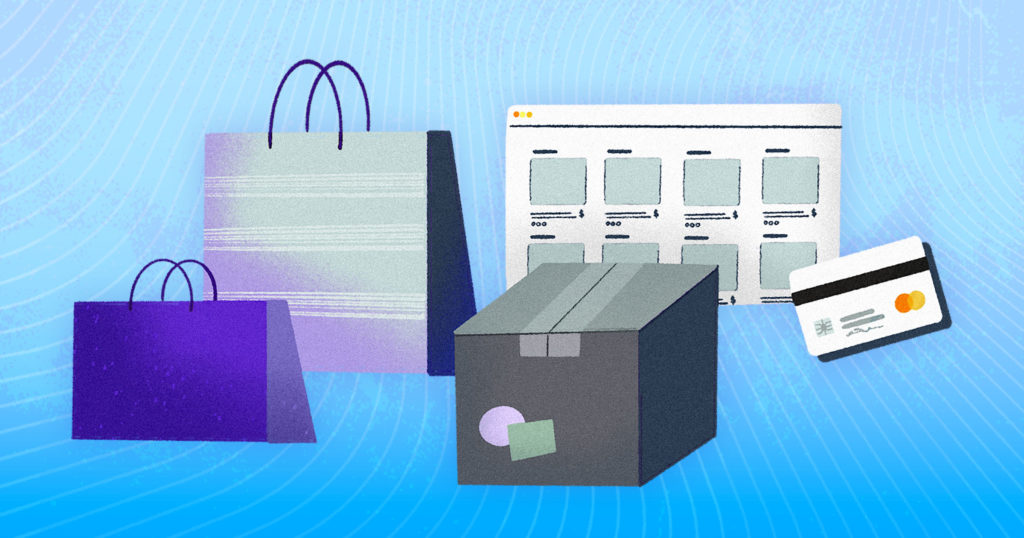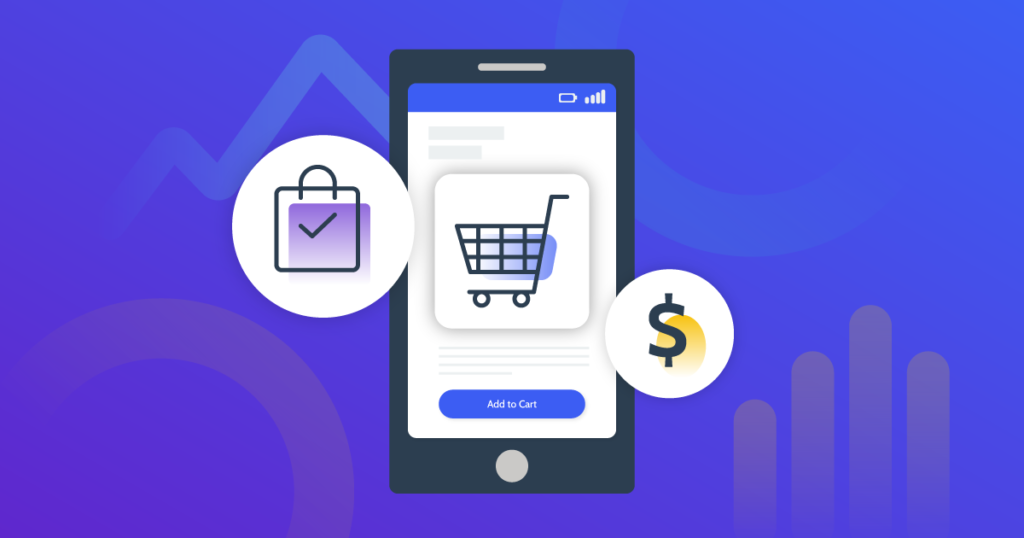In the modern ecommerce-first retail industry, being able to protect customer data with airtight security measures is more important than ever before.
Fuelled by the COVID-19 pandemic, universal mobile device adoption, and many more factors, the global ecommerce industry has been projected to see sales exceeding $5 trillion by the end of the year.
Though headless ecommerce is known to be conducive to a higher level of security for ecommerce businesses, there are still several important considerations business leaders must take on board to protect their customers.
In this post, we’ll take a closer look at the relative security of headless ecommerce, the threats facing stores using a headless architecture, and the most important considerations to bear in mind when working in a headless environment for the first time.
Headless architecture and security
As you’ve probably heard elsewhere, headless ecommerce architecture lends itself naturally to a higher degree of customer data security.
Because ecommerce cyber attacks traditionally focus on the front end of stores, traditional all-in-one environments are more at risk in instances where a hacker finds a weak spot in the front end, which they can use to steal or modify data directly.
Decoupled architecture, on the other hand, can only be accessed through an API, which doesn’t deal with information that’s intended to be public and typically comes protected by several layers of firewalls and other security measures.
While it may be easier to protect your customer data within a headless ecommerce system than a more traditional model, cyber threats are evolving alongside technology, and ecommerce business leaders must be aware of the threats that persist in a headless ecommerce working environment.
User authentication
Shopper and API authentication is one of the biggest security concerns for businesses using a headless ecommerce system due to the relative lack of control surrounding mobile and single-page apps. Though separate layers of security are usually put in place for payment card info, delivery addresses, and other especially critical data, hackers can still access a whole host of other personal data sets with potentially devastating consequences.
When your shoppers access your headless ecommerce store through a mobile app, this will require a direct call to your API, which will rely on the credentials from the user or client for authentication. In this scenario, allowing insecure security workarounds, such as letting client credentials to be kept on a device’s physical storage, can undermine any authentication barriers intended to keep sensitive data safe.
Using a secure Shopper Login and API Access Service (SLAS) will equip your user authentication system with secure, built-in workflows that will patch up weak spots in how your users verify their identity while still enjoying a fluid and hassle-free experience with your store.
Storefront
Although a typical headless ecommerce architecture isn’t as vulnerable to storefront attacks as traditional all-in-one systems, vulnerabilities can still persist.
Ecommerce business owners must ensure their storefront is up to date in all the standard security areas and avoid leaving their store exposed to more traditional threats, especially if they’ve just moved their business over to a headless ecommerce architecture.
Using HTTPs in all API calls, having a system in place for monitoring DDoS attacks, using an application firewall, and steering clear of XSS attack vectors should all be a basic part of your ongoing ecommerce cybersecurity strategy.
As with any part of your business, it’s important to stay up-to-date on current and emerging cyber threats, their severity, and how your resources should be applied to meet them. Online resources such as the OWASP top ten list of web application security threats can help you and your team understand where your store is at risk and the best course of action for dealing with current and pertinent security threats.
Personal data protection
Modern shoppers demand a higher and higher degree of personalization from every brand they interact with. As such, ecommerce businesses are under immense pressure to create highly personalized experiences in their stores.
However, when you’re leveraging large swathes of consumer data to tailor store content to the individual, it’s essential to make sure your use of this data is compliant with all the national and regional privacy regulations that apply to your business.
Make sure you’re taking a proactive approach to following GDPR, PIPEDA, and any other relevant legislation that promises data protection to private individuals. Once compliance is assured from the top down, it’s also important to educate workers at all levels on these regulations and ensure that avoiding breaches is seen as everyone’s shared responsibility.
Best practices for headless ecommerce customer data protection
Though headless ecommerce architecture may make securing your store easier, it certainly won’t make your store’s security inherently airtight. Giving your customers the high standard of security they’ll expect requires a proactive attitude to security and adherence to established habits and precautions. To help you keep your security strategy on the right track, here are four key best practices to protect your customer data in a headless environment.
Review your data collection and management
Before you add any new layers of protection, it’s important to review the categories of PII (personally identifiable information) you’re collecting and how these are being used to keep your store ticking over.
Whether big or small, every ecommerce business will need to collect some kind of PII to keep the store functioning, such as customers’ names, addresses, and payment card details. Other information may not be as explicitly necessary for your store to function and will be more closely tied to marketing and personalized experiences.
Here, we’ll reiterate the importance of understanding and adhering to all the data protection laws that apply to your business. Though there’s some variance from region to region, most PII regulations require the data you hold to be demonstrably necessary to the running of your business.
While we’re on the subject, it’s important to note that these regulations don’t just apply to B2C business operations. If you’re courting venture capitalists or sending out similar B2B emails, you’ll have to be equally careful about proving you have a legitimate reason to make these contacts.
Safeguard your SaaS vulnerabilities
Though most modern ecommerce stores depend heavily on SaaS infrastructure to operate, a surprisingly small proportion understand the importance of SaaS backups. By and large, cloud service providers don’t have a responsibility to protect the data that’s stored using their services – their only obligation is maintaining the software itself.
Learn more about your responsibilities as a merchant under the Shared Responsibility Model.
Suppose your customers lose their private data through a cyber attack or accidental breach. In that case, it will be on you to take responsibility for those customers’ personal data security, or lack thereof.
With a reliable SaaS backup cycle in place, your most important data will be kept in an outside location, either on a public cloud or in on-premises servers. If the SaaS products you’re using fail, you’ll be able to restore your store to an earlier version, recovering essential data and getting the service back to a functional state.
Build and maintain a solid encryption strategy
Even when you’re up to scratch on all the right regulations and know you’re not using any unethical practices to harvest data, many modern consumers will consent to share huge banks of data with you in the course of a normal buyer journey.
When you’re entrusted with private individuals’ emails, social media profiles, active locations, and similar details, it’s essential to have an effective data encryption strategy in place to minimize the risk of breaches any way you can.
Basic steps such as securing an SSL certification will get your customer data encryption some of the way there. Still, to ensure your security can stand up to the variance and severity of modern cybersecurity threats, you’ll need to take things further.
Many popular ecommerce platforms like Shopify have their own encryption measures in place and a wealth of information that sellers can use to fortify their security, so make sure you’re making the most of your provider’s resources.
Think about user management
One of the most neglected areas of ecommerce security is internal password and user management.
It can be easy to fall into the trap of thinking your internal endpoints will be safe and that your team will have the good sense to keep credentials secure. However, the chain of ecommerce security is only as strong as its weakest link, and it’s essential to have a user management policy in place that doesn’t leave anything to chance.
Requiring passwords to be sufficiently strong, changed often, and covered by multi-factor authentication, can all go a long way in preventing breaches that may start from an internal touchpoint. Further measures, such as implementing a zero-trust policy and automating secure workflows as much as possible, can also help plug any gaps and minimize the chances of a breach.
For more information, leading security provider Strong DM has a great list of user management best practices that can serve as a useful checklist.
Final thoughts
Customer data security in ecommerce can be a complex and, at-times confusing subject, but grabbing it by the horns is essential to protecting the privacy of your customers and the longevity of your business.
As you work to ensure the long-term security of your business, we hope this guide has helped you understand the cybersecurity risks inherent in a headless ecommerce environment and the steps you’ll need to take to mitigate them.




